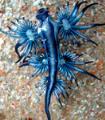member for the trees
  
Posts: 4003 Joined: 28-Jun-2011 Last visit: 27-May-2024
|
..here is a recommended list of the TOP 8 ACACIAS TO GROW orientated for Nexians.. all except confusa & simplex [Pacific Ocean] are originally australian native, therefore will in most cases tolerate temperatures down to minus10°C (to minus12°C in one German report) A. floribunda is already known to be naturalised in southern parts of Europe..other species are grown in Germany and the UK successfully..the isotype of the species was named Mimosa floribunda in France nearly 200 years ago! A. confusa is particularly suited to tropical climates, Hawaii etc.. and A. simplex is the highest % of alkaloids reported in an acacia [3.6%] A. acuminata (Narrow leaf & small seed var. ) have the highest just dmt% known from phyllodes [up to (> )1.2%] ..while not on the list, A. burkittii is now considered a sub-species of acuminata, and also has very high content, and drought resistance..will tolerate down to at least minus 8°C, likely minus 10.. and A. phlebophylla, apart from being a great and powerful plant, is good to grow for conservation reasons (it's very rare) ..will tolerate snow for some weeks.. ..seed of all these species* are easily commercially available from many sources..google search the Nexus for germination and growing parameters.. [*=exception A.maidenii x obtusifolia..is being slowly introduced to horticulture..however garden encouraged new hybrids could fairly easily be created.] re the % rating scale: (+) would indicate only a very small % of alkaloids..(++) here is somewhere in the 0.2 - 0.4% range..(+++) around 0.5 - 0.9% and (++++) ..1.0% and higher..an > indicates either "up to" or 'seasonal variation' etc ALL are fantastic friends who will get to know you, and you will grow to love.. .. _________________________________________________________________________________________
SPECIES ________%RATING____ADVANTAGES______DISADVANTAGES
A. acuminata var.___>(++++)_____'Cleanest', Leaf good__slower grower
A. confusa [S.E.Asia] >(++++)____Well known usage___suits warmer climates
A. floribunda____(++) > (+++)____Fastest Growing_____sometimes 'Milder' extracts
A. maidenii Xobtusifolia(+++)_____Fast; good profile____has some other alkaloids
A. neurophylla_____ > (++++)_____Drought Tolerant____phyllodes have ß-carbolines
A. phlebophylla_______(+++)_____Alpine climate,clean__ harder some climates
A. simplex(simplicifolia)(++++)____High%,Salt Tolerant__some NMT (1 formal test)
A. victoriae_________(?) > (+++)____Seed Food.,low water__may be variable &/or5meo(?)
_______________________________________________________________________________________________________________
Note: in ideal situations/conditions some species can reach 6-7 ft tall in 3-4 years from seed…they can usually be pruned or 'tipped' to encourage more bush or branch.. of the other 88 or so species around the world known or with some evidence of CNS active alkaloids, there is much for the grader or horticulturalist to enjoy just in growing these plants..and many are good nitrogen-fixers, improving impoverished land.. Pioneer Species…! this is why i like them so much..they are helpful..  .
|
|
|
|
|

DMT-Nexus member
Posts: 363 Joined: 31-Mar-2011 Last visit: 13-Jun-2017
|
speaking of helpful  thanks for the info. good to know they're nitrogen fixers. "Trust in your own wetware; your psyche and your body will be reunited." -Gracie and Zarkov
in plants we trust
|
|
|

DMT-Nexus member

Posts: 1711 Joined: 03-Oct-2011 Last visit: 20-Apr-2021
|
Thank you nen888, it's good to see that the acuminata & victoriae seeds I'm getting soon are in the list. I will definitely help them colonize my area  "The Menu is Not The Meal." - Alan Watts
|
|
|

"No, seriously"

Posts: 7324 Joined: 18-Jan-2007 Last visit: 24-Dec-2025 Location: Orion Spur
|
Awesome, thank you! Kind regards, The Traveler
|
|
|

veni, vidi, spici
Posts: 3642 Joined: 05-Aug-2011 Last visit: 22-Sep-2017
|
Cracking work nen888, i will be starting to grow a couple of Floribunda trees in the spring. INHALE, SURVIVE, ADAPT it's all in your mind, but what's your mind??? fool of the year
|
|
|
DMT-Nexus member
Posts: 176 Joined: 23-Jun-2010 Last visit: 07-Nov-2025
|
Excluding confusa and simplex, all of these acacia can be planted in-ground worldwide? If so, I expect a healthy transplant to be your best option?
|
|
|

DMT-Nexus member
 
Posts: 12340 Joined: 12-Nov-2008 Last visit: 02-Apr-2023 Location: pacific
|
thanks nen..I finally figured out acacia germination..or what is working for me anyway. Now I have one 6 month old acuminata that is about 3 inches tall..and I have 4 more acuminatas that just popped up the other day and starting to show the bi-pinnate leaves..3 floribundas have sprouted and have some leaf..1 confusa popped up, and I am waiting on obtusifolia and simplex to pop up but they look like the seed head is poking our of the soil more today..I started 6 of each other than the simplex and obtus, those I did 3 each. I found that they are germinating effortlessly inside of my greenhouse in my growing room with 2 lights and a fan where I have my caapi's. Once they are established I will take them out of the greenhouse. I think its the fan inside there that they like..when I tried before many rotted due to lack of airflow I think. I have some desmanthus illinoensis going too and I am gunna start some leptolobus. All the desmanthus wil eventually go into the gound out back..and hopefully some acacias will take out there also once they are large enough. The confusa and simplex will stay indoors under my lights along with the mimosas. Maybe I will get some pictures of the seedling in the next day or so. Long live the unwoke.
|
|
|

Learn to love, Live to learn
Posts: 125 Joined: 15-Sep-2012 Last visit: 21-Oct-2023 Location: The Mushroom Kingdom
|
Good info nen.  One step in making it easier for people to see what might and might not work for them. I'm still working on finding the correct seeds for myself. Acuminata, and either obtusfolia or phlebophylla. Or, maybe even both.  Just imagining.. being able to go outside and picking my own phyllodes instead of waiting for something else to come in the mail. Ohhh, I can't wait.  I was going to ask, but I just now noticed your info on the different varieties of acuminata. Do we know anything about the differences in them? In relation to dmt, of course? I see that the narrow leaf & small seed type is better, which, I wouldn't have guessed on my own. And this, this is a shining example of what we all should be doing ourselves. Granted, not all species, or subspecies, grow everywhere, but, chances are, a few will survive in your specific area. jamie. I hope nothing but good luck accompanies you and your plants on their journey. jamie wrote: Now I have one 6 month old acuminata that is about 3 inches tall..and I have 4 more acuminatas that just popped up the other day and starting to show the bi-pinnate leaves..3 floribundas have sprouted and have some leaf..1 confusa popped up, and I am waiting on obtusifolia and simplex to pop up but they look like the seed head is poking our of the soil more today..I started 6 of each other than the simplex and obtus, those I did 3 each.
I found that they are germinating effortlessly inside of my greenhouse in my growing room with 2 lights and a fan where I have my caapi's. Once they are established I will take them out of the greenhouse. I think its the fan inside there that they like..when I tried before many rotted due to lack of airflow I think.
I have some desmanthus illinoensis going too and I am gunna start some leptolobus. All the desmanthus wil eventually go into the gound out back..and hopefully some acacias will take out there also once they are large enough. The confusa and simplex will stay indoors under my lights along with the mimosas.
Maybe I will get some pictures of the seedling in the next day or so. Super Radical wrote:Naww. MJ sandwich is the way to go the first time.
Then next time after the WTFOMG moment, realize your ready to changa things up.
It's more special that way. 'DMT is not one of our irrational illusions. What we experience in the presence of DMT is real news. It is a nearby dimension-- frightening, transformative, and beyond our powers to imagine, and yet to be explored in the usual way. We must send fearless experts, whatever that may come to mean, to explore and to report on what they find.' - Terence McKenna
|
|
|
member for the trees
  
Posts: 4003 Joined: 28-Jun-2011 Last visit: 27-May-2024
|
..thanks and good to hear from you staresatwalls
Vosdel
The Traveler (for this site also!<3 ) 3rdI
Red Eclipse
jamie& Soy sauce..!!  Red Eclipse Red Eclipse wrote: Quote:Excluding confusa and simplex, all of these acacia can be planted in-ground worldwide? If so, I expect a healthy transplant to be your best option? ..if you meant seedlings, sure.., but note that Acacias can almost NEVER BE TRANSPLANTED IF GROWING IN OR ONCE PLANTED IN THE GROUND..they are incredibly sensitive to even the slightest tap-root damage once above a certain size (>2-3ft) and established..they are never transplanted in bush regeneration (unlike many other kinds of trees) for this reason.. even around 15-20% root bark damage will kill acacias ( unlike Mimosa hostilis/tenuiflora) .. ..but, it should be perfectly easy to send live seedlings with plastic tube 'pots' (say 15-30cm tall) through post/courier, and allowing a week or two without water to arrive (as long as they got moist medium when packed) ..only certain nation's/state's specific bio-quarantine regulations could prevent this.. jamie wrote: Quote:I have some desmanthus illinoensis going too and I am gunna start some leptolobus. All the desmanthus wil eventually go into the gound out back..and hopefully some acacias will take out there also once they are large enough. The confusa and simplex will stay indoors under my lights along with the mimosas. ..groovy jamie you plant-man! ..i had a few first-hand reports of getting 0.28-0.35% DMT/NMT from Desmanthus illinoensis harvested in (i think) fall..summer had larger amounts NMT (not a problem IMO  ..and of course leptolobus is said to be higher yielding..Desmathus extracts were said to come out either 'oil like' or solid, depending on season..both forms perfectly active and ok.. Desmanthus would make a nice ground companion to Acacia in a nitrogen-fixing garden solution..they are also in Family Fabaceae (previously Leguminoseae) like acacias and mimosas.. & Soy sauce wrote: Quote:I was going to ask, but I just now noticed your info on the different varieties of acuminata. Do we know anything about the differences in them? In relation to dmt, of course? I see that the narrow leaf & small seed type is better, which, I wouldn't have guessed on my own.
..well, you got it saucey..  narrow &/or small..that's the tip-off! ..there is detailed information and analysis in the acacia info and acacia analysis threads respectively..the broad leaf variety has a lot of betacarbolines as well as dmt in the phyllode, but the bark dmt ratio is higher.. ..so, for different reasons ANY strain of A. acuminata is good..all have their advantages and disadvantages..  ..enjoy your younglings' progress..  see ya all about..! .
|
|
|
member for the trees
  
Posts: 4003 Joined: 28-Jun-2011 Last visit: 27-May-2024
|
..just thought i'd add, for serious Horticulturalists and breeders, and hobbyists, a little on creating hybrids and aquired characteristics..from Acacia Genetics and Sex [in the acacia info thread]: "..Acacia's are both female and male in the one tree..during the flowering period, of between 1-2 months, the sex of the pollen will change sex a number of times, alternating at roughly weekly to 12 day periods.. insect (and small bird) pollinators re-visit the trees at regular intervals, thus moving around male and female pollen, the combination required to produce seed..in a population, different trees will have either sex pollen simultaneously, increasing reproductive chances.. a method of aiding potential seed production of single isolated trees (such as in cultivation, or yatiqiri's a. constricta) is to, at different intervals such as weekly, collect pollen in a paper bag..upon each return during flowering place the pollen-filled bag over some of the flower heads, and shake..this way the tree is a lot more likely to get the required pollen of both sexes..." ..in the case of A. maidenii X obtusifolia, the following characteristics are introduced, depending of relative percentage or transferred genes: A. maidenii (Active strain) is faster growing, higher phyllode (leaf) %, more seasonally variable, shorter lived.. A. obtusifolia (Isotype Form) is slow growing, high bark% but additional alkaloids, longer lived.. ..so, between these characteristics lies a new tree, balancing advantages and disadvantages of both.. ..it is important to source one of the 3-4 known Active/high yielding strians of A. maidenii, and also the mountain form (Isotype..or 'type specimen' form) of A. obtusifolia (NOT the more coastal form, as this shares odd alkaloids with A. sophorae) ..below is a photo of a good strain of A. maidenii, with a clue.. ..all other species in the list the variety or strain is not so important.. ps. A. simplex (simpicifolia) has been successfully grown in Texas..  added pic below too..(also has narrower phyllode forms) nen888 attached the following image(s):  A_maidenii%203.JPG (18kb) downloaded 4,157 time(s). A. simplex with pods.jpg (110kb) downloaded 4,161 time(s).
|
|
|
member for the trees
  
Posts: 4003 Joined: 28-Jun-2011 Last visit: 27-May-2024
|
Vodsel wrote:Thank you nen888, it's good to see that the acuminata & victoriae seeds I'm getting soon are in the list. I will definitely help them colonize my area  ..heh, heh..sounds like you're already with the 'spirit of the trees' Vodsel..yeah, the Acacian Invasion of Europe 2012..turning the Mean-Time back into the dreamtime..  ps. the indoor growth parameters of acacias are still being worked out and fairly new..our beloved jamie, for instance is a world pioneer! ..i suspect the Netherlands Tulip Growers are already onto it though, with their pioneering history..the main requirement, obviously, other than water, nutrient (high N, low P) and drainage, the main requirement is Light..as much as possible, but not 'time-manipulated' like cannabis..just regular..having less light and water slows growth..in most parts of the world, however, Acacias suit parks, roadsides, degraded farmland or industrial waste lands etc..they are soil doctors, amongst other feats..and your local insects and birds will welcome them fast.. be great to see any pics of different growing conditions Nexians are trying..love to see your pics jamie..  below, a Bonsai Acacia and a quite large indoor Acacia tree in the U.K.> nen888 attached the following image(s):  acacia-bonsai.jpg (98kb) downloaded 4,106 time(s). indoor grown acacia UK.jpg (452kb) downloaded 4,087 time(s).
|
|
|

DMT-Nexus member

Posts: 1711 Joined: 03-Oct-2011 Last visit: 20-Apr-2021
|
Bonsais  Will do them. Now my tree spirit is mostly in an (almost) one year old mimosa. And I'm just rolling my sleeves with the acacias. Will start them indoors, lots to learn and so little time. Thank you nen for all the references. "The Menu is Not The Meal." - Alan Watts
|
|
|

DMT-Nexus member
Posts: 194 Joined: 31-May-2012 Last visit: 12-Jul-2023
|
Very nice topic  However from what I have read I do not think A. phlebophylla should be included in this list. It seems to be very hard to cultivate this species outside its' natural habitat. Most plants die after three years. Therefore it is probably no good species if you are looking for an Acacia you want to grow in your environment as a DMT-source. Has anyone experience with growing Acacias in europe? Any reports about what species survive winter temperatures of down to -20°C are highly appreciated. 
|
|
|
member for the trees
  
Posts: 4003 Joined: 28-Jun-2011 Last visit: 27-May-2024
|
..hi Nicita..some nice pictures in that link thanks, however it may be a little out of date..progress has been made in growing A. phlebophylla..in the acacia info thread i wrote: Quote:..the species (like P. virdids) is a fairly pure source of dmt (with 0.3% in the leaves, around 98% pure), and makes a very good standard for alkaloid testing (only a leaf required for this)
but it needs to have it's growing method worked out more (& obviously it would be better to leave it to grow in the wild, it is a protected species) ..it would be a good hobby experiment for horticulturalists
..a decade ago it was said to be very difficult to grow outside it's native (alpine) habitat, and micro-rhyzobial associates were theorized to be required..however, i have now seen at least half a dozen seed grown trees, large & healthy, in cultivation..also, a 10 year old 'semi-bonsai' in a concrete tub (fat, but only 4ft tall) ..it has also been successfully grown in tissue culture (cloning of cutting material)
..it may be particularly suited to alpine cold conditions..
respect all trees... ..it is certainly not as fast as A. floribunda, A. maidenii, or A. confusa..but generally i'd say where it doesn't thrive is in warmer or more humid conditions..
|
|
|

DMT-Nexus member
Posts: 103 Joined: 29-Oct-2012 Last visit: 14-Jan-2014 Location: Paris, Texas
|
I think it's good to have A. phlebophylla in the list as it's so well known and so vulnerable in the wild. But it is probably more suited to more experienced plant growers, with some acacia practice, to grow. And definitely it doesn't cope with mouldy environments. It's never going to be a large tree like all the others in Nen's list. But it's a Nice tree  . In it's native habitat, above 1200m, it gets lots of cool mist, a week or two of snow, and recorded temperatures down to Minus-8.1C. Below are some photos of 4 and 6 year old A. phlebophyllas grown in temperatures above their native norm. This was in 2007. The trees are still alive  . phyllode attached the following image(s):  gallery_3_1_174530.jpg (148kb) downloaded 3,978 time(s). gallery_3_1_249311.jpg (290kb) downloaded 3,989 time(s).
|
|
|
member for the trees
  
Posts: 4003 Joined: 28-Jun-2011 Last visit: 27-May-2024
|
..thanks phyllode..  ..is that a peperomia it's growing with i wonder..? companion plants..hmm.. just wanted to add, Nicita, that AFAIK the lowest reported tolerated sustained temperatures for acacias is minus 12 degress C..this doesn't mean that some couldn't handle lower, especially for short durations.. ..and with Acacias generally, growing medium or soil not too hard/dense is good too for faster growth..good drainage and loose enough for growing roots to push through quickly..
|
|
|
member for the trees
  
Posts: 4003 Joined: 28-Jun-2011 Last visit: 27-May-2024
|
..i could not write a more qualified guide to growing acacias than this, from a respected and wonderful world expert: Cultivation of AcaciasBy Marion SimmonsQuote:There are two main methods of growing Acacias: from seeds and from cuttings. Growing Acacias from seeds is the easiest and quickest method of producing plants. One important factor to consider is the source of seed. Seed collected from a home, botanical or other garden where Acacia species from different climatic zones grow together in an unnatural combination provides the opportunity for the production of hybrid seed resulting in plants that may not be true to type. Seed Collection: Seed collected from natural bush areas would avoid this problem. A permit to collect would be required from State National Parks Authority or the land owner. Seed too may be obtained from a reliable native plant seed service which usually can guarantee the source and quality of the seed supplied. Acacia seeds ripen in the pods on the bush and are expelled which means a reliable method of collection needs to be used. If it is not feasible to be there at the right time, a cloth bag (not plastic) or nylon pantyhose may be placed over the ripening pods and tied. After collection pods should be discarded and the dried insect free seeds stored in airtight containers marked with date, place of collection and name. Propagation: It is recommended that all equipment and soil to be used (if not purchased commercially) be sterilised to prevent any possible contamination from soil pathogens or production of weeds. Propagation Units: 1. Simple equipment can be used to start growing from either seeds or cuttings. Clean plastic pots filled with the appropriate mix (see below) and covered with a plastic bag supported by curved wire. A tie or rubber band may be used to secure the plastic bag in place. 2. Small plastic propagation units are available from commercial sources or may be made. 3. Glass or ‘poly’ houses also are commercially available or may be built. An automatic misting system could be installed to maintain humidity. ‘Bottom heat’ too may be used to create warm conditions year round giving faster production of roots or germination of seeds. This is basically a protected heated pad which is placed in a frame or box covered by sand or gravel into which the pots are embedded. These ‘houses’ need to be covered in summer with shade cloth or painted with special white paint to control the heat. Seed and cutting mix. Seed mix may be purchased or mixed using 3 parts river sand (not beach) and 1 part well composted pine bark, peat moss or vermiculite. Cutting mix is similar but is usually coarser in texture using 3 parts gravel to 1 part pine bark. To both mixes a small amount of slow release native plant pellets may be added. To grow from seed use a freely draining seed mix placed in plastic containers or punnets. Acacia seeds need to be treated before sowing to enable moisture to penetrate the normally hard seed coat. One method is to place seeds in a container, cover with near boiling water and soak overnight. Seeds which swell are ready for sowing, the remainder may be re-treated. Another method is to scarify the seed. This is done by rubbing the seeds between two pieces of sandpaper thus thinning the seed coat to allow water to penetrate. If few seeds are to be sown it is possible (but normally difficult on account of the very hard seed coat) to nick the top of the seed away from the seed stalk with a sharp blade or needle without damaging the soft part of the seed. Seeds should be sown about 5 mm apart in prepared soil mix, lightly covered with mix to the depth of the seed or a little more, lightly pressed flat, watered and the containers placed in a semi-shaded site and kept above ground level or placed in a propagation unit. Soil should be kept moist but not wet. Germination can occur between a few days and a few weeks. Remember to label all pots with plant names and date of planting. Acacias may be propagated successfully from cuttings especially from those with smaller phyllodes (leaf like structures). It is usually recommended that cuttings be taken from half hardened wood and be about 5-15 cm long. Material taken from lateral growth and stem material hardening after flowering can be used for cuttings. The cutting should be cut below a node with sharp secateurs and the lower two thirds of the ‘leaves’ removed without tearing the bark. Reduce any large ‘leaves’ to about half their size or less to reduce water loss and stress. Remove any flowers or buds. Dip the base of the cutting in a rooting hormone, either liquid or powder and place cutting in plastic containers filled with cutting mix which has been lightly flattened. Make a hole with stick or pencil to take each cutting. Firm, water the pots before placing them under plastic, in a propagator or glass or ‘poly’ house. To strike cuttings of bipinnate (fern-like) foliaged Acacias is more difficult as the tiny leaflets tend to hold water and fall very quickly, thus spoiling the cutting. More experiments and trials need to be undertaken with this type of cutting to be consistently successful. Potting On: When seeds have germinated and the seedlings are large enough to handle (about 2-3 cm tall) they should be transplanted into prepared clean potting mix in 7 cm diameter plastic pots. Cuttings are ready to pot on when roots have developed. This can be observed by checking for roots protruding from the base of pots. Remove rooted cuttings by gently tipping the contents of the pot onto a plastic sheet and carefully removing the new plants and placing them each in a plastic pot half filled with potting mix, making sure that the roots are straight. If the roots have started to curl around or are too long for the new container, trim them back carefully with clean secateurs. Fill the pot with soil and firm. With both seedlings and cuttings firm the soil around the plants before watering. Place the pots in a shade house or shady area receiving only morning sunlight for one or two weeks to offset the shock of transplanting. After this time gradually introduce the new plants to sunlight. Water regularly to prevent drying out. Acacia plants should not be left in pots too long before planting in the garden as they quickly develop long root systems. Planting Out and Maintenance: To plant out in the garden select a well-drained spot, clear away any weeds or grass and dig a hole about twice the depth of the pot. Fill the hole twice with water allowing the water to drain away each time. To release the plant from the pot, hold a hand over the top and around the plant, knock the top of the pot on a firm surface and ease the plant out, Tease out the roots, straighten or trim any of those that are curled. Place the plant in the prepared hole planting to the previous soil level, hold the plant upright while the hole is filled with soil. Firm around the plant and water in. Continue to water about once a week until the new plant is established, especially if conditions are dry. The garden area could be mulched with pine bark or other available material to help prevent drying out but the mulch needs to be kept away from the plant stem to avoid the possible development of stem rot. Pruning is advisable each year to maintain a bushy healthy shrub. This is best undertaken after flowering. References: Australian Plants 22(180): 291-334 (2004) and 25(203): 243-290 (2010). These volumes contain a number of useful articles dealing with cultivars and the cultivation of Australian Acacias.
Elliot, W.R. and Jones, D.L. (1980). Encyclopaedia of Australian Plants Vol 1. (Lothian Publishing Company: Melbourne)
Simmons, M.H. (1987). Growing Acacias. (Kangaroo Press: Kenthurst)Useful links Association of Societies for Growing Australian Plants (ASGAP)The Acacia Page on the ASGAP site provides information on the cultivation and propagation of Wattles, along with photographs of a few species, and more. below: Acacia boormanii in cultivation nen888 attached the following image(s):  boormanii-in-cult.jpg (35kb) downloaded 3,877 time(s).
|
|
|

DMT-Nexus member
Posts: 336 Joined: 01-Jul-2011 Last visit: 29-Jun-2024 Location: Gaia
|
amazing info nen, appreciate your effort alot. thanks . this summer i acquired some type of acacia seeds in southern Turkey. maybe you know of some type or sub-type that made it there. I couldnt take photos but i can describe it as a large tree, with round white to yellow flowers, i couldnt recognize phyllodes and the leaves structure was like mimosa and albizia. but the round yellow flowers are pointing me towards acacia. i will germinate some seeds in spring and post some photos from my work in future. i also got brachystachy seeds in that region of Turkey. i picked them myself acctualy. edit : I found a paper which says Acacia Dealbata spread through southern europe.it also mentions another few types of wattles. Also Dealbata is very similar to what i described, but i am not convinced it is the exact same type i stumbled upon. the characteristic case of Acacia dealbata Link in EuropeAmbivalent attached the following image(s):  Unknown.png (99kb) downloaded 3,825 time(s).
|
|
|
member for the trees
  
Posts: 4003 Joined: 28-Jun-2011 Last visit: 27-May-2024
|
..hey thank you and nice to hear from you Ambivalent..glad you keeping warm..  ..i will get back to you on that ID..it may well be another species..will edit the prognosis back in this post..
|
|
|

DMT-Nexus member
Posts: 33 Joined: 08-Apr-2012 Last visit: 29-Aug-2025 Location: At the crossroads of ways
|
I find this post more exciting and alsofor Europeans it opens interesting perspectives. 
|